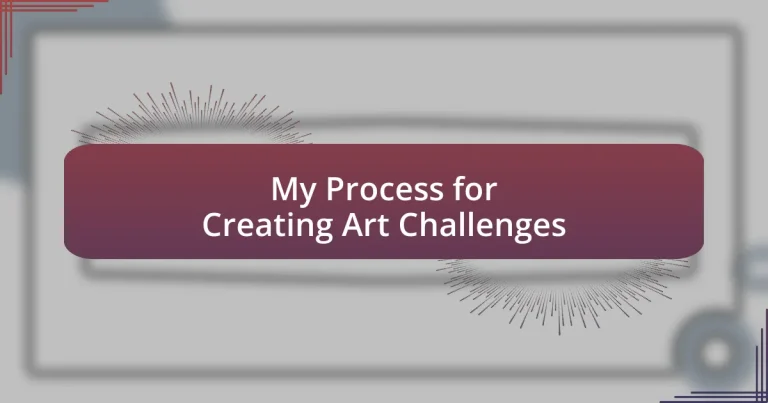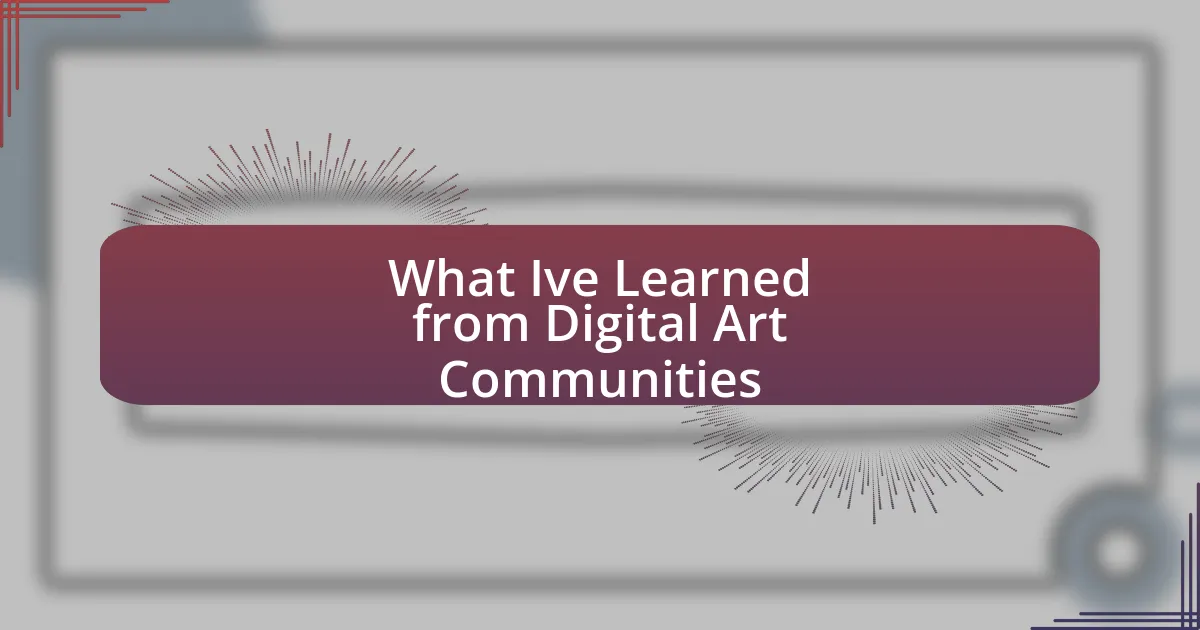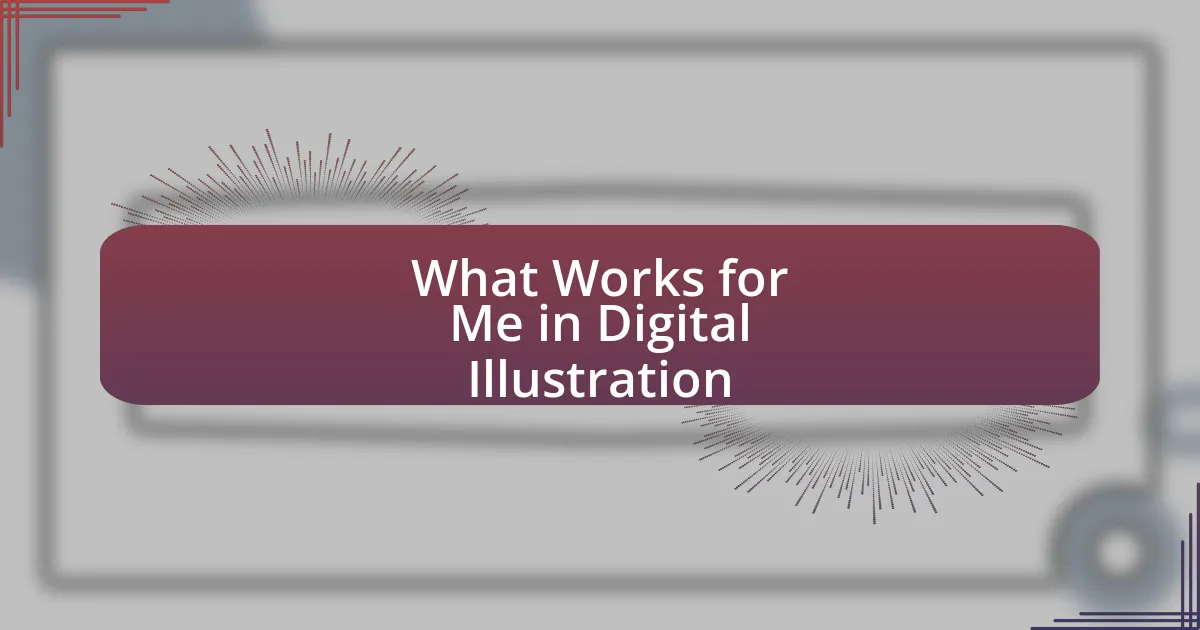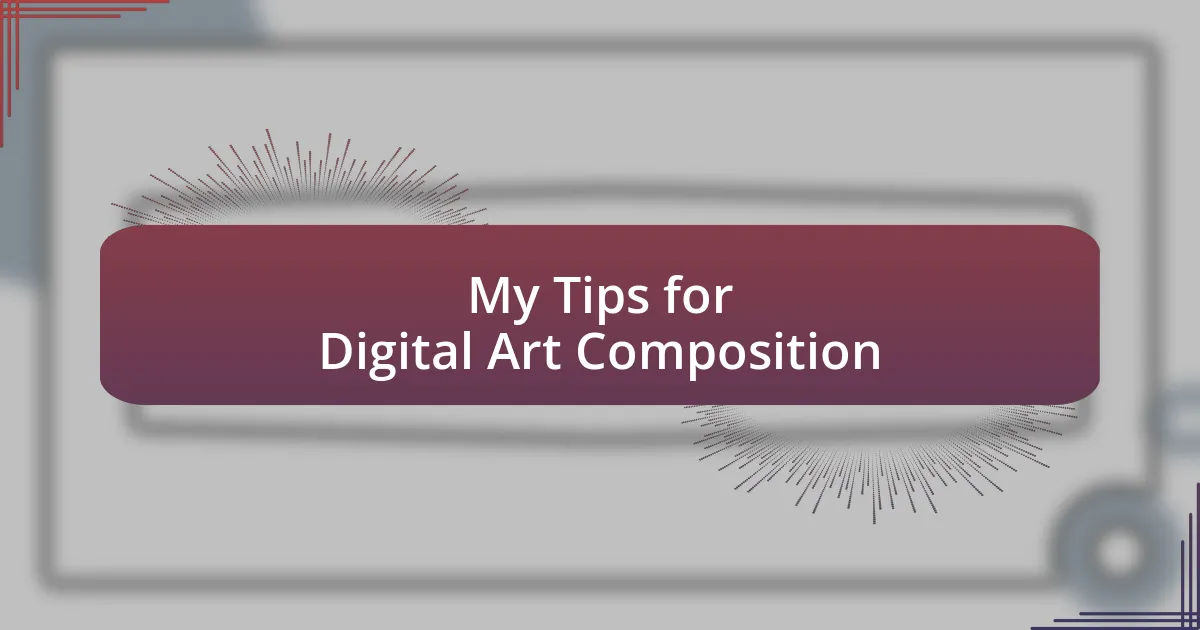Key takeaways:
- Art challenges promote growth and self-discovery by pushing artists out of their comfort zones.
- Defining clear objectives, such as goals and motivations, enhances the art challenge experience.
- Setting up logistics, including organization and communication, is crucial for maintaining creative momentum.
- Community engagement can be fostered by promoting participation and creating inviting environments for sharing work.
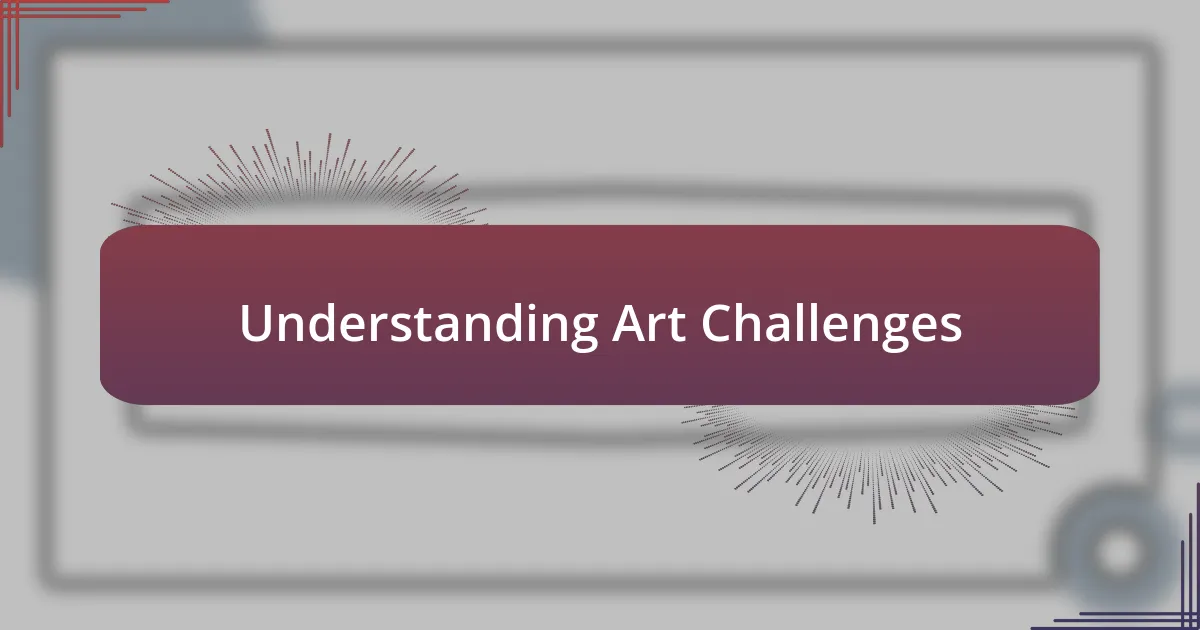
Understanding Art Challenges
Art challenges can be more than just creative prompts; they often serve as powerful tools for growth and self-discovery. I remember the first time I entered a 30-day drawing challenge. Initially, I felt overwhelmed, but as I pushed through, I found my unique style evolving. Isn’t it fascinating how stepping outside our comfort zones can lead to unexpected breakthroughs?
When I think about the various types of art challenges, I can’t help but marvel at their diversity. From daily sketches to themed prompts, each challenge invites artists to explore new techniques or themes they might typically shy away from. Have you ever tried a challenge that made you feel exposed? I had that experience during a collaborative project, where sharing my work for feedback was daunting yet liberating.
Understanding art challenges isn’t just about completing a task; it’s about tapping into the deeper layers of our creativity. I often reflect on how these challenges create a sense of community and support among artists. It’s reassuring to realize that we’re not alone in our struggles. How do you think participating in an art challenge could change your perspective on your creative journey?
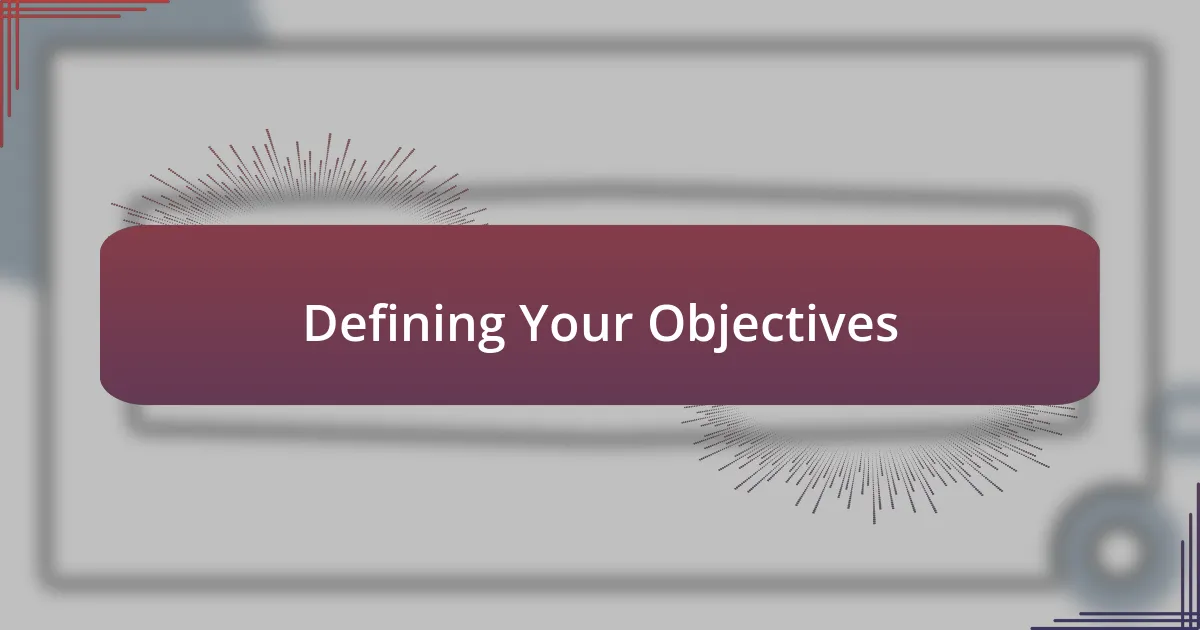
Defining Your Objectives
Defining your objectives is a crucial step in any art challenge. It’s like setting a compass for your creative journey. When I embarked on my first painting challenge, I didn’t just dive in; I spent time contemplating what I genuinely wanted to achieve. This reflection ultimately shaped the experience and made the journey more meaningful.
To effectively define your objectives, consider these key points:
- Identify your goals: Are you looking to improve a specific technique, experiment with a new medium, or find your artistic voice?
- Reflect on your motivations: What drives you to participate in this challenge? Understanding your inner motivations can fuel your commitment.
- Set measurable outcomes: Determine how you’ll assess your progress. This could be through completed pieces or personal reflections at intervals.
- Embrace the process: Remember, objectives should encourage growth, not just results. Make sure to leave room for exploration and discovery.
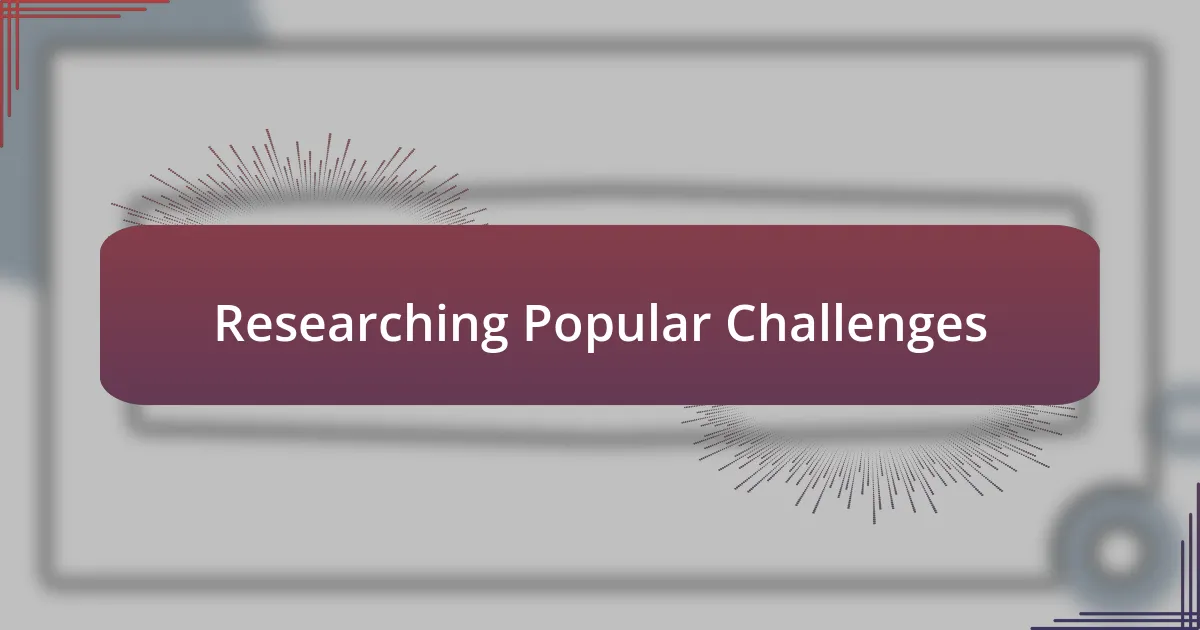
Researching Popular Challenges
Researching popular art challenges can be a game-changer for your creative process. I often find inspiration by delving into social media platforms like Instagram or Pinterest, where I can see what kind of challenges are trending. One time, I stumbled upon a “30-Day Drawing Challenge” that pushed me out of my comfort zone, and I’ve never looked back since.
In my experience, paying attention to the types of challenges that resonate with artists can lead to valuable insights. While some challenges focus on daily prompts, others might revolve around specific themes or mediums. I remember when I participated in a minimalist art challenge; it taught me the beauty of simplicity and how less can indeed be more.
When researching these challenges, it is essential to analyze their participation levels and outcomes. For instance, challenges with communal aspects often foster a sense of belonging that enhances motivation. Reflecting on my participation in a group challenge, the camaraderie that developed was as enriching as the art I created.
| Challenge Type | Description |
|---|---|
| Daily Prompts | Encourages daily engagement, offering specific topics or themes to explore. |
| Medium-Based | Focuses on experimenting with various arts materials, pushing creative boundaries. |
| Thematic | Centers around a specific theme or emotional journey, enhancing personal connection. |
| Collaborative | Involves multiple artists working together, fostering community and support. |
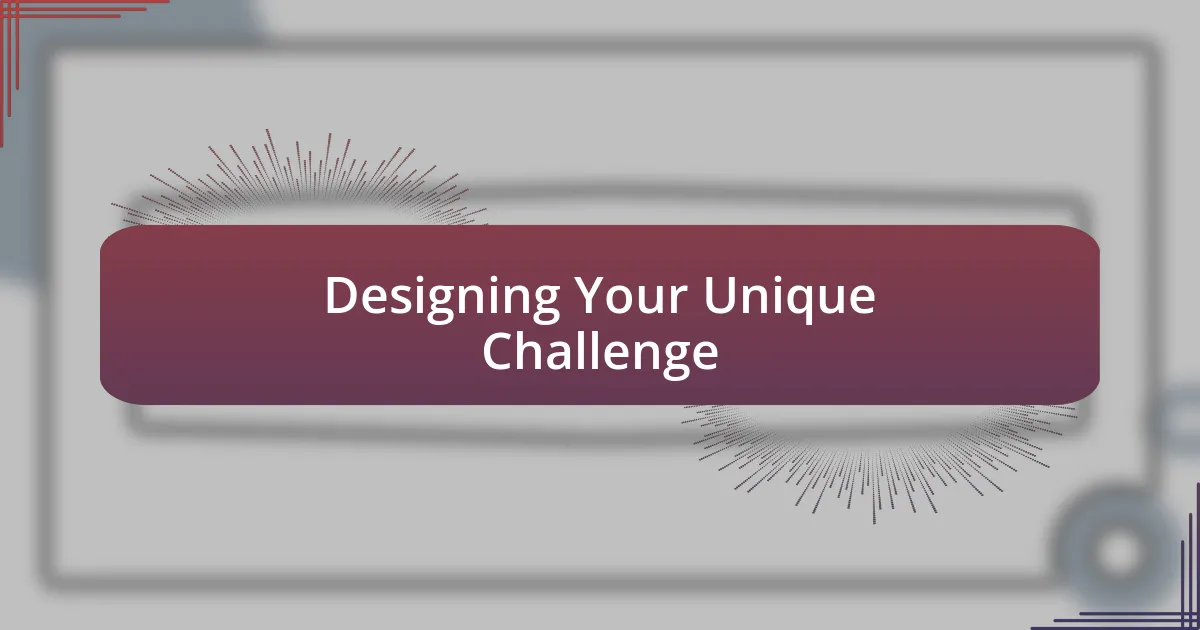
Designing Your Unique Challenge
When I think about designing my unique art challenge, I often consider what pushes my boundaries as an artist. For example, I once created my own week-long challenge where each day focused on a different emotion through color and technique. It was enlightening to see how my expression transformed simply by shifting my focus.
I believe it’s crucial to align your challenge with your personal artistic goals. One time, I devised a photography challenge that required me to capture everyday objects in unconventional ways. This not only sharpened my eye for detail but also reignited my passion for seeing beauty in the mundane. How often do we overlook the simple things around us?
To ensure your challenge feels unique and engaging, brainstorm specific themes that resonate with you. I remember choosing “nature’s patterns” for an illustration challenge, motivating me to explore textures and shapes in the environment around me. This deliberate focus helped me connect emotionally with my surroundings while strengthening my artistic skills. What themes stir something within you?
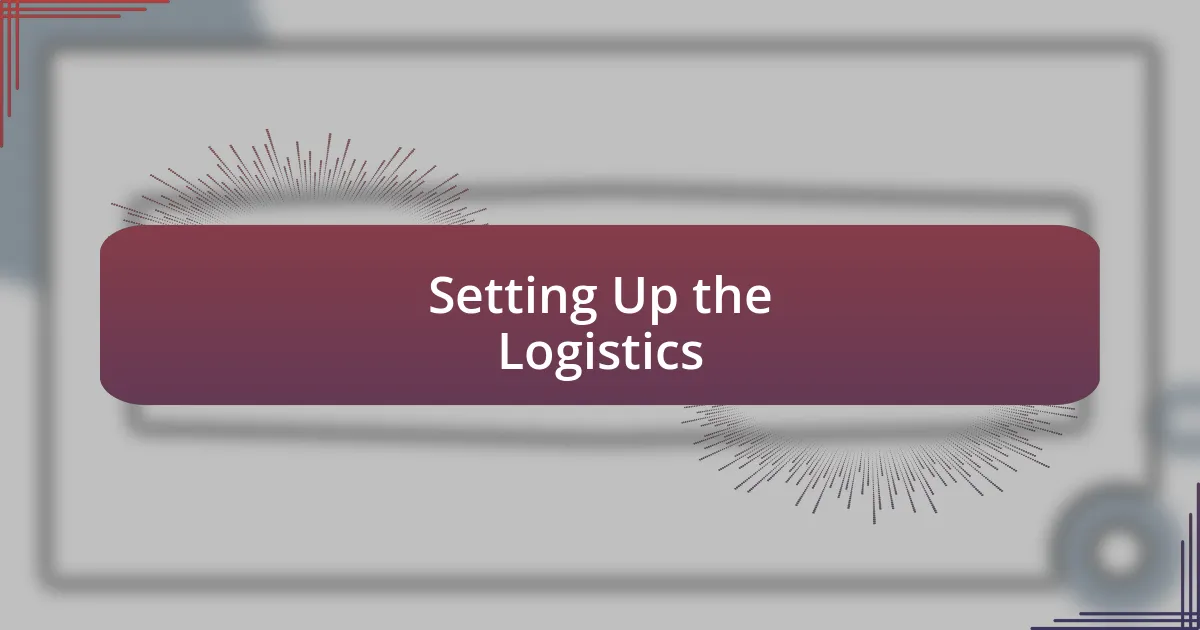
Setting Up the Logistics
Setting up the logistics for my art challenges often feels like setting the stage for a performance. I remember when I planned a month-long mixed media challenge; I meticulously organized my workspace and materials in advance. Having everything at hand streamlined my process and kept my creative energy flowing. Have you ever noticed how preparation can often alleviate that initial feeling of overwhelm?
Communication is another key logistical element I focus on. When I decided to involve a small group of fellow artists in my last challenge, I created a shared online platform for updates and feedback. This not only fostered a sense of community but also provided motivation as we cheered each other on, making the experience richer for everyone involved. How do you keep your creative community engaged?
Finally, I consider the timing and deadlines carefully. For my most recent challenge, I broke it down into weekly mini-goals, allowing me to focus on one aspect of my work at a time. This method not only prevented burnout but also instilled a sense of accomplishment in my daily practice. Have you ever tried setting smaller milestones to maintain momentum?
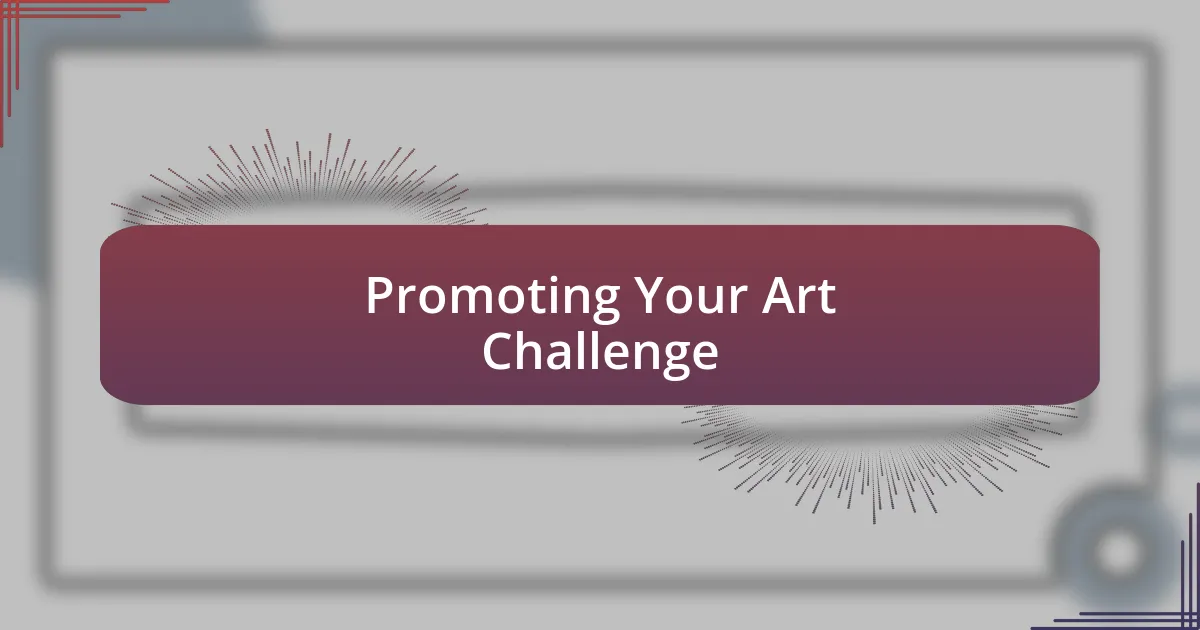
Promoting Your Art Challenge
When it comes to promoting your art challenge, leveraging social media is crucial. I fondly remember the surge of excitement when I created a dedicated hashtag for my watercolor challenge. The hashtag not only made it easy to track participation but also encouraged others to join in as they saw friends engaging with the content. Have you ever noticed how a simple tag can build a larger community around your art?
Reaching out to your existing network can amplify your reach significantly. I often send personalized messages to friends, fellow artists, and even my email subscribers, inviting them to participate. This direct approach not only makes them feel valued but often leads to a ripple effect where they share the challenge with their followers. What’s your go-to strategy for getting the word out?
Consider collaborating with other artists to broaden your audience. For instance, I teamed up with a friend for a dual art challenge where we each promoted each other’s work. This cross-pollination not only doubled the visibility but also deepened our connection as artists. How can you tap into these collaborative opportunities to elevate your challenge?
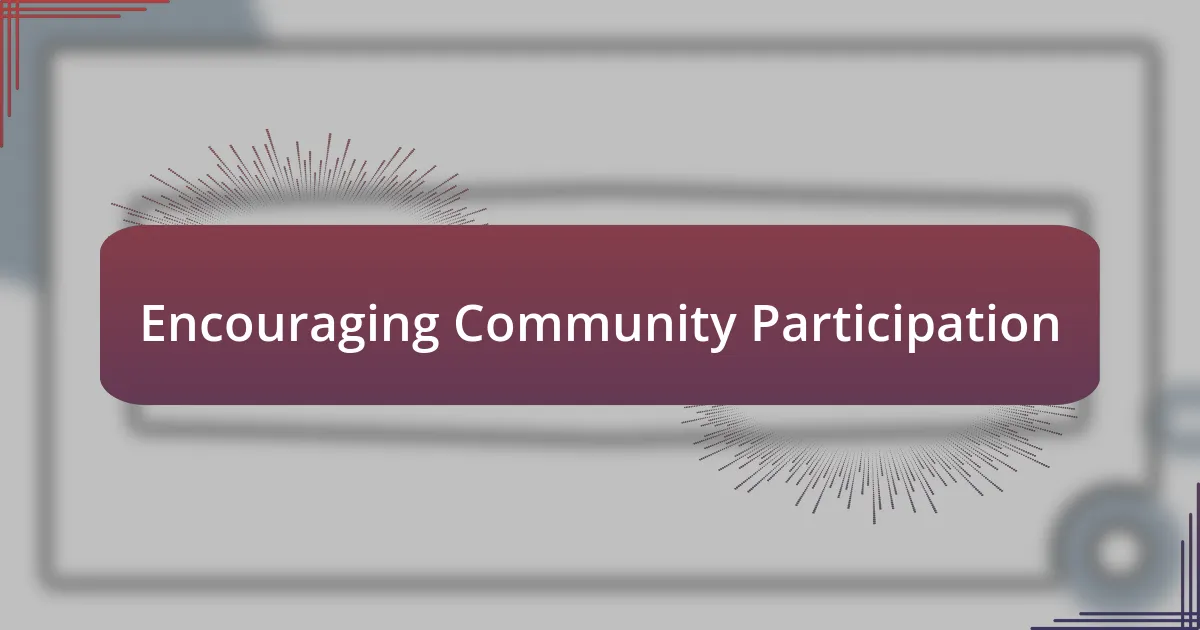
Encouraging Community Participation
Building a vibrant community around your art challenge is all about making everyone feel included. I once hosted a challenge where participants could submit their own prompts. The joy and surprise in their responses created a dialogue that made everyone feel like they were shaping the challenge together. Have you seen how actively participating in creation can bond individuals?
Creating an inviting atmosphere is equally essential. I remember when I shared my favorite artworks of participants, along with heartfelt comments on their pieces. It sparked excitement and motivation among the artists as they felt acknowledged for their efforts. How does recognition influence your own creative process?
Lastly, I’ve found that conversational platforms like Discord or Facebook groups can foster a deeper sense of belonging. During one challenge, I set up a weekly check-in where participants could share progress, tips, or even struggles. The camaraderie that developed was truly heartwarming. Have you thought about establishing a safe space for discussions and support among your participants?

